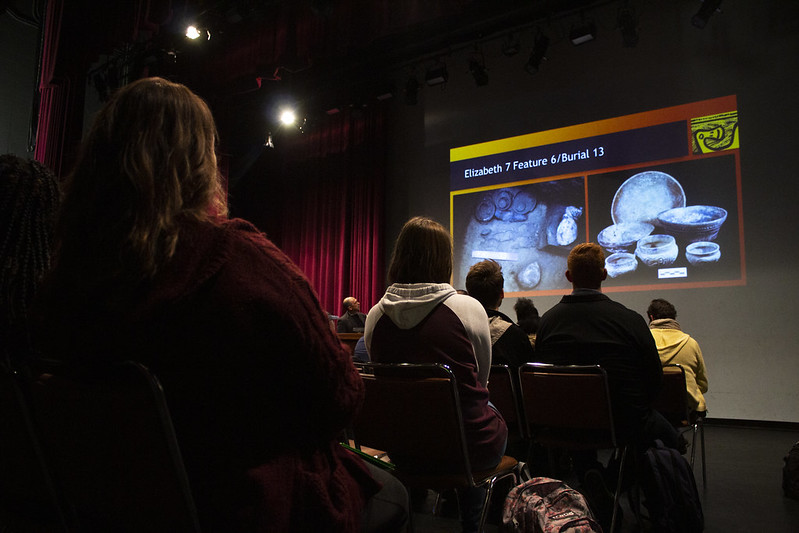Alexandra Blockton
ablockton@lc.edu
In the lower Illinois Valley (LIV), which is the Middle Woodland (also known as Hopewell from 100BCE – 450BCE), people began settling in the valley and building mounds. LIV mounds are not just big piles of dirt for archaeology of Elizabeth 7-Bluff Crest. The community cemetery is known as Pete Klunk 2-Bluff Crest and Kamp 9-Flood plain. Mounds are more than just big piles of dirt and holes dug into the ground. Some of the mounds were only used for burial sites. It’s archaeology which is the study of human history and prehistory through the excavation of sites and the analysis of artifacts and other physical remains. Typically, mound structures are cleared and prepared surfaces with ramp/tomb complexities, as well as sod ramps, additions/extensions and massive layers.
“I believe the presentation served its purpose to introduce students to a learning opportunity outside of what they’d normally receive in their classroom. It proves valuable to faculty because the intent is to have an expert share information relative to what faculty are teaching. It becomes a win-win for students and instructors. My proof that true learning occurred was the quantity of questions asked by those in attendance. It was testament that students were engaged in the process of learning because it provoked them to question further,” said Jared Hennings, a faculty member here at Lewis and Clark Community College (LC).
Initially, Gibson Site (11C5) is located at Mound 3 which makes them more than just cemeteries. Non-Human skeletons were located underground next to the skeletons of children. It was where our ancestors were once thought to be located. But when archaeologists located what they thought were ancestral remains it was discovered that they were headless Spoonbill Birds.
As of today, mounds are located on both private and state property. Recently a couple of ancient remains being studied were found in Illinois with mitochondrial DNA. The Biological Distance is the traits of the skull. There are no new skeletal collections coming, and archaeologists will only be able to work with what they have.
“My presentation, and really the research we’re doing here at the CAA, is about trying to really understand why people living in the lower Illinois Valley were building mounds and creating the archaeological record that we observe. The time period I spoke about, the Middle Woodland period (ca 100 BC-AD 450) was a period of resettlement of the lower Illinois valley. During that time, people living in the valley built numerous mounds and created objects from non- local raw materials that were often ultimately buried with the dead,” said Dr. Jason King, the executive director of the Center for American Archaeology, located in Kampsville, Illinois. It’s where History meets Science!
He also mentioned, “My focus on time travel, which we defined as practices that allow people to experience pastness, and non-human persons (or agents), is part of our ongoing work to better understand the way people living in the valley during this time conceptualized their world.”
Finally, students here at LC are highly encouraged to join the CAA program. They can attend one of the Adult Field School programs in 2020. Further information can be found at www.caa-archeology.org/programs as well as information regarding other programs.




